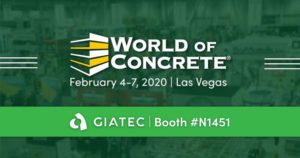Though concrete is known to be a material which has high fire-resistance, its physical, chemical and mechanical properties do endure severe changes when subjected to high temperatures – particularly with temperatures over 300 degrees Celsius. Fire is actually one of the most serious potential risks to concrete structures such as bridges, buildings and tunnels. As such, a structural safety assessment is required in order to evaluate bearing capacity and durability in fire-damaged concrete structures.
There are a number of conventional on-site and off-site techniques that are currently available for the assessment of fire-damaged concrete. However, all methods have their advantages and disadvantages. Wallace Mukupa of Nottingham Geospatial Institute at UNNC took to studying the use of terrestrial laser scanning (TSL) as a non-destructive means of assessing and detecting fire-damaged concrete. Wallace stated, “Scanning can be done at a distance, which improves site safety. Scanning is also quick, with millions of points measured in a few seconds and a spatial resolution acquired in a short time. This is advantageous for engineering structures considering their scale and magnitude.”
Mukupa’s study investigated influences of scanning incidence angle and distance on the laser intensity returns. The change in concrete colour was also examined. Data was collected and interpreted on heated and unheated concrete in order to establish a baseline. Concrete specimens were heated in a furnace to temperatures as high as 1000 degrees Celsius. Throughout the experiments, the measurement of the incidence angles for the samples had been found to vary with distance and a trend was established. That is, as scanning distance increased, the incidence angle decreased.
Mukupa said, “A comparative analysis of the laser intensity for heated and unheated concrete showed that the recorded intensity values for heated concrete are higher than those of unheated concrete. In fact, the laser intensity values of heated concrete showed a remarkable increase in the concrete exposure temperatures from 250 – 1000 degrees Celsius.” He continued, “ Such a correlation between the intensity and the exposure temperature is of cardinal importance in assessing the condition and extent of damage to concrete. This finding implies it could be possible to use laser intensity to detect the state of concrete whether it has been heated or not.”
Laser scanners also have an advantage to other techniques in the market in that most of them have either an internal or external camera which can be utilized to seize concrete images.
The results from the study concluded that using the TLS approach is a feasible option to assessing levels of fire-damaged concrete and further provides and understanding of the concrete’s condition in relation to strength changes when subjected to elevated temperatures.
Source: New laser scanning test to assess fire-damaged concrete

